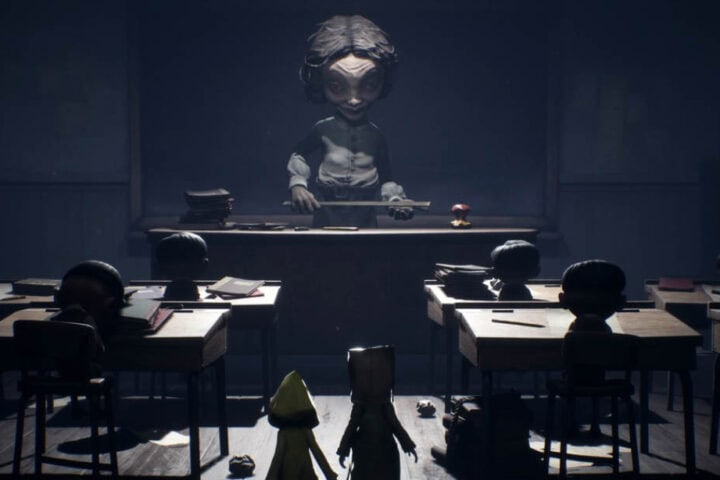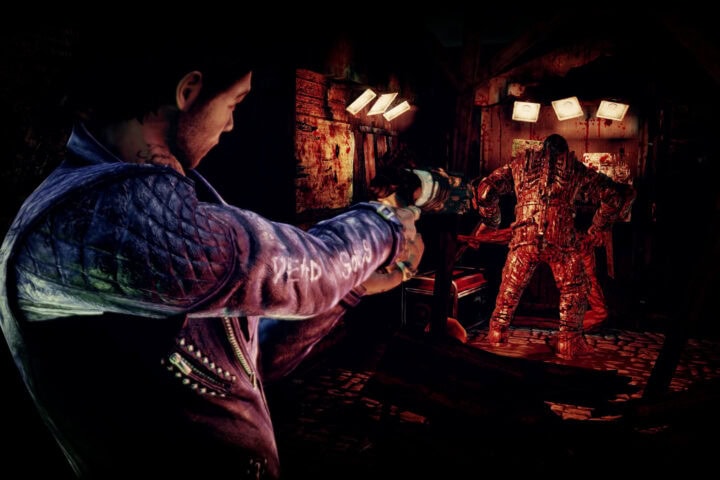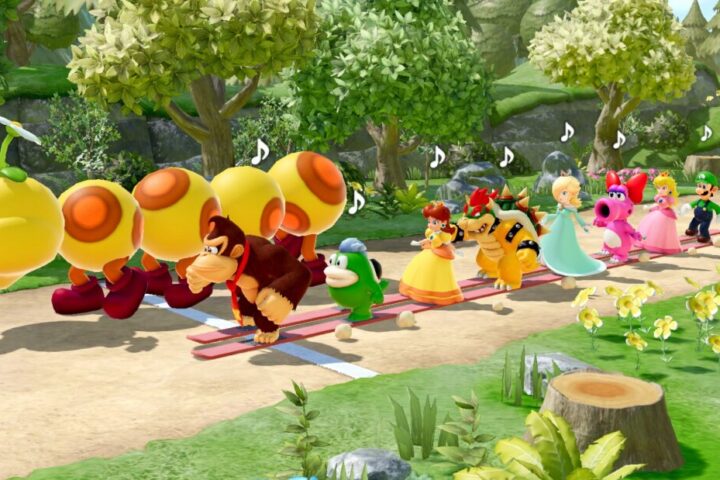The main hook of Neva—and the thing that sets it apart from Nomada Studio’s debut outing, Gris—is the game’s namesake, a white wolf with antlers who’s your constant companion throughout. Neva is in many ways more of a main character than the human swordfighter Alba, who you control. After an opening cutscene, in which a larger wolf (presumably Neva’s parent) dies, the young Neva follows you around in need of protection.
There are smart details in Neva’s behavior to this effect. Early on, she’ll hide from most combat encounters and is sometimes too afraid to jump across wide gaps. But as things progress from season to season (which break up the game into acts), Neva grows in size, confidence, and ability, such that she becomes the stronger half of the duo, at times even acting as a guide.
The game is decidedly more kinetic than its predecessor, partly because the movement is more fluid and a bit faster, but mostly because it adds combat to the mix. In general, these fights flow smoothly and gracefully at a medium pace. They aren’t all that difficult or complex—consisting mostly of a three-hit combo of sword swings and a ground pound—and they occasionally suffer from some difficult to read attacks and unclear hitboxes. These are minor quibbles, though, and in a way they miss the point of the combat altogether. The fights are primarily visual spectacles, which exist to set the game’s striking illustrations in bold, highly dramatic motion.
The visuals in Neva are consistently great, maybe the most arresting of the year. They’re as beautiful as anything in Gris, and are more evocative still, as that game had a tendency to lean too far into the abstract. Though the breathtaking scenery in Neva can sometimes stretch into the impossible or otherworldly, with giant flowers suspended in freefall and trees towering well above the clouds, the overtly natural elements help to keep things grounded.
There are, though, two notable exceptions. The dark, brooding dream sequence titled “Fall Part 3,” which—with its open, twitching mouths and pillars of piled bodies—is nearly as dramatic and shocking as it intends to be. Then there’s the cloudy, pastel-soaked, literally reflective “Winter Part 1,” whose mind-bending mechanical twist isn’t worth spoiling, but it can safely be said that it’s so compelling to play that any amount of visual abstraction is worth it.
The enemies you sometimes fight (and other times just observe) are a highlight of the game’s visual design. They’re distinctly human-like, with long, grasping limbs and masked faces that stare blankly atop inky black bodies. Their movement and behavior suggest the worst elements of human nature—greed, compulsion, self-destruction—and they take many forms as the game progresses. They corrupt animals small and large, they combine into writing, indistinct masses, and they liquefy when they die—if they were even alive to begin with. In many sequences you simply observe them, hoping you don’t catch their attention and fall into an ambush.
The themes here are painted with a broad brush, but their refusal to get down to specifics doesn’t mean that they don’t still ring true. The game bittersweetly fixates on parenthood, as you watch Neva herself grow and outpace Alba as the seasons pass, and on the destruction of the natural world, which in turn makes it more hostile and violent. And then there’s the connective thread between the two—that even when it feels like everything is falling apart, because sometimes it literally is, the only thing you can do is keep moving.
Since 2022, Devolver Digital has not provided Slant Magazine with review codes for its titles. This game was reviewed with code purchased by the publication.
Since 2001, we've brought you uncompromising, candid takes on the world of film, music, television, video games, theater, and more. Independently owned and operated publications like Slant have been hit hard in recent years, but we’re committed to keeping our content free and accessible—meaning no paywalls or fees.
If you like what we do, please consider subscribing to our Patreon or making a donation.




